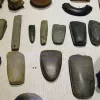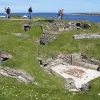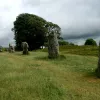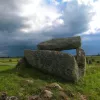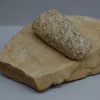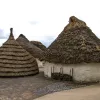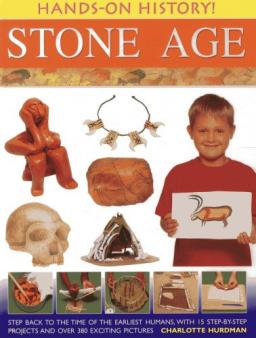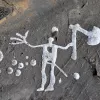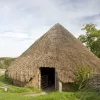Important update from TheSchoolRun
For the past 13 years, TheSchoolRun has been run by a small team of mums working from home, dedicated to providing quality educational resources to primary school parents. Unfortunately, rising supplier costs and falling revenue have made it impossible for us to continue operating, and we’ve had to make the difficult decision to close. The good news: We’ve arranged for another educational provider to take over many of our resources. These will be hosted on a new portal, where the content will be updated and expanded to support your child’s learning.
What this means for subscribers:
- Your subscription is still active, and for now, you can keep using the website as normal — just log in with your usual details to access all our articles and resources*.
- In a few months, all resources will move to the new portal. You’ll continue to have access there until your subscription ends. We’ll send you full details nearer the time.
- As a thank you for your support, we’ll also be sending you 16 primary school eBooks (worth £108.84) to download and keep.
A few changes to be aware of:
- The Learning Journey weekly email has ended, but your child’s plan will still be updated on your dashboard each Monday. Just log in to see the recommended worksheets.
- The 11+ weekly emails have now ended. We sent you all the remaining emails in the series at the end of March — please check your inbox (and spam folder) if you haven’t seen them. You can also follow the full programme here: 11+ Learning Journey.
If you have any questions, please contact us at [email protected]. Thank you for being part of our journey it’s been a privilege to support your family’s learning.
*If you need to reset your password, it will still work as usual. Please check your spam folder if the reset email doesn’t appear in your inbox.
The Stone Age
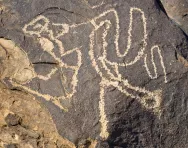
What was the Stone Age?
The Stone Age is the name given to the earliest period of human culture when stone tools were first used. In Britain, the Stone Age was around 12,000 years ago.
When people began smelting metal around 4500 years ago the Bronze Age began in the British Isles.
Top 10 facts
- Our ancestor, modern man Homo sapiens, emerged around 200,000 years ago.
- Homo habilis, an early human who evolved around 2.3 million years ago, was probably the first to make stone tools.
- Neanderthals died out around 30,000 years ago.
- Flint was commonly used for making stone tools but other stones such as chert and obsidian were also used.
- The Stone Age is divided into three periods; the Palaeolithic (old Stone Age), Mesolithic (middle Stone Age) and the Neolithic (new Stone Age).
- Palaeolithic and Mesolithic people were nomadic hunter gatherers. They moved frequently following the animals that they hunted and gathering fruits and berries when they could.
- The dog was the first animal to be domesticated. This happened during the Mesolithic period. Dogs could help with the hunt, warn of danger and provide warmth and comfort.
- The gradual development of agriculture and the domestication of animals during the Neolithic period meant that people could live in settled communities.
- Some isolated tribespeople were still effectively living in the Stone Age as recently as the twentieth century.
- The houses in Skara Brae, a Neolithic Orkney village, had beds, cupboards, dressers, shelves and chairs.
Stone Age Timeline
- 300,000-150,000 years agoAppearance of Homo sapiens in Africa
- 40,000 years agoFirst cave paintings in Altamira, Spain and carved figurines

- 35,000 years agoTally sticks (for counting)
- 30,000 years agoNeanderthals become extinct
- 28,000-20,000 years agoUse of needles, saws and harpoons
- 27,000 years agoEarliest evidence of weaving
- 25,000 years agoEarliest pottery
- 15,000 years agoDomestication of pigs
- 13,000-10,000 years agoEnd of last Ice Age
- 10,500 years agoCattle domesticated
- 10,000-9000 years agoBarley and wheat cultivated
- 9,500 years agoCat domesticated
- 8,000 years agoSheep and goats domesticated; irrigation began; wheel invented
- 7,000 years agoGold treasure in burials in Bulgaria
- 7,500 years agoFirst smelting of copper
- 6,000 years agoDomestication of horse and chicken
- 5,500 years agoWriting invented in Sumer



Boost Your Child's English & Maths Today!
- We'll created a tailored plan for your child...
- ...and add activities to it each week...
- ...so you can watch your child grow in skills & confidence
Did you know?
- The Palaeolithic period lasted for such a long time that it accounts for 99% of all human history.
- The first cities did not have streets. The houses were joined together and you walked across the roofs.
- Forty percent of the skeletons recovered from an Egyptian Mesolithic cemetery showed signs of violent injuries. Archaeologists believe that they may provide the earliest evidence of warfare.
- The city of Jericho was founded 11,000 years ago.
- Dogs were domesticated from wolves.
- The houses in Skara Brae had toilets flushed by streams.
Stone Age gallery:
- A Stone Age tool set (Photo Credit: Michael Greenhalgh)
- Skara Brae in Scotland
- Stonehenge
- The stone circle at Avebury
- Castlerigg in the Lake District
- A Neolithic grave in Sweden
- Neolithic tools
- Recreated Neolithic stilt houses
- Carnac in Brittany, France, known for its unique rows of ancient standing stones
- A recreated Neolithic village
Gallery
About
The Palaeolithic or old Stone Age lasted from 2.7 million years ago to around 20,000 to 10,000 years ago. Britain would have looked very different during the Paleolithic: there were a number of cold periods called ice ages and the shape of landscapes changed as it became warmer and colder. During the Lower Palaeolithic Britian was not an island, but connected to mainland Europe. Some time between 400,000 and 200,000 years ago that changed and the area between the British Isles and what is now Denmark flooded and finally disappeared under the sea about 7500 years ago.
A number of distinct groups of humans lived during the Paleolithic but only our ancestor Homo sapiens has survived. During this time men were hunter gatherers, finding food from their local environment and moving from site to site depending on the season. Tools were made of stone but also of wood, bone, leather and vegetable fibres. Language also developed and its early forms may have been similar to the click languages used by some South and East African peoples today. The period also saw the beginnings of art, such as the cave paintings of Chauvet in France and Venus figurines (statues of pregnant women) and the development of religion.
The Mesolithic or middle Stone Age saw the development of finer, smaller stone tools such as arrow or spear heads. The first evidence for homes in Britain comes from this period, and the first canoes were made. This meant that men could fish as well as hunt. The dog was also domesticated during this period, probably by the selection and breeding of the least aggressive wolves.
The Neolithic or new Stone Age, from around 6000 years ago, saw the beginnings of agriculture. Farmers from mainland Europe probably brought seeds and farming tools to Britain. Growing crops was a more reliable food supply than gathering wild plants and the landscape was transformed by a new type of life, linked to settled communities of people.
Animals such as the cow and sheep were domesticated and provided a ready supply of meat, milk, wool, leather and bone. Grain was the first food that could be stored for long periods of time. Grain needed to be processed so stones were used for scything (cutting grass crops) and grinding. The need to harvest and store grain meant that it became necessary to stay in one place and settlements could develop. Trees were cut down to make clearings where crops could be grown and people worked together to construct trackways and paths. Large scale construction could take place, trade developed and people began to have different roles such as leader, priest, fighter, farmer, hunter or slave.
By the end of the Stone Age people created enclosures by piling up circular earth banks, perhaps to protect themselves and their animals, and buried their dead in huge earth mounds and under stone slabs. Silbury Hill, in Wiltshire, is the largest prehistoric earth mound in Europe. Built around 4500 years ago, its height and volume are similar to those of Egyptian pyramids, which were built at around the same time, 2500BC. It's been estimated that its construction must have taken around 4 million man hours of work.
Related Videos
Just for fun...
- Make your own Stone Age paper axe tool
- Stone Age jigsaw puzzles
- Could you make it in the stone age? Take this quiz and find out!
- Get into the minds of Ancient Britons, build a stone circle, create cave art and read some great fiction and non-fiction books about Ancient Britain
- Watch a video about Stone Age Hunter-Gatherer Cooking
- Make your own Stone Age cheese!
- Play a game on the Chauvet Cave website to discover just how much we have in common with prehistoric humans
- Learn all about ancient stone tools
- Download two brilliant comics about Stone Age Wales sites: Barclodiad y Gawres and Bryn Celli Ddu
- Try a Stone Age counting activity
- Learn to make your own Stone Age string (cordage)
- Can you match the prehistoric track to the animal that made it?
- Get creative and make some Stone Age rock art
- Complete the Museum of London's prehistoric archaeology activity pack
- Download and print an instant Stone-Age dress-up kit
- Show off your knowledge with a hunter-gatherer quiz and try some Stone-Age storytelling
Children's books about the Stone Age
Find out more about the Stone Age
- A general introduction to prehistoric Britain from BBC Bitesize
- Read about a 9000-year-old human settlement at Mountsandel in Northern Ireland
- Understand how Stone Age hunter-gatherers lived and who the first farmers were
- Read kids' historical fiction set in the Stone Age
- Introduction to Stone Age including cave art
- Download fantastic information booklets about Yorkshire in the Mesolithic period, Mesolithic life and hunter-gatherer people
- Visit a virtual museum of the Stone Age
- An archeological experiment in London tried out ways of moving large stones which might have been used in places like Stonehenge
- Find out about food in prehistoric times
- See a Paleolithic handaxe, found in Somalia in East Africa, which was made about 1.5 million years ago!
- Join historian Greg Jenner for a BBC Sounds kids' homeschool history lesson on the Stone Age
- Using virtual reality, scientists have recreated the sounds of Stonehenge from 3,000 years ago
- Read about Stone Age tools found in Yorkshire
- Take a close look at Stone Age objects found in Britain: a piece of small, portable Ice Age art showing an animal from Britain, a carved stone ball from Skara Brae, a 500,000 year old hand axe, a Mesolithic woodworking tool, a Mesolithic headdress made from deer antlers and a Neolithic quern for making flour
- Download a Neolithic Britain image bank from the British Museum
- Information about prehistoric pottery, made for the first time in the Neolithic period
- Why were flint and mining so important to prehistoric Britons?
- Find out more about daily life in prehistoric Britain, with links to more information about art, commerce, religion and more
- Stonehenge food and feasting: how people cooked and served their food
- Read about the mystery of Stonehenge engineering: how was it built by prehistoric people?
- Discover Stone Age art and images of daily life on the 10,000 Years BC website
See for yourself
- Creswell Crags in Derbyshire: first inhabited by Neanderthals, these cave dwellings with carvings date back to the Palaeolithic era
- Stonehenge is Britain’s foremost neolithic site. You can take a virtual tour of Stonehenge from your living room with a 360 degree view from the monument.
- Look through the BBC Bitesize kids' guide to Stonehenge
- Visit the Wiltshire Museum to see treasures dating to the time of Stonehenge and worn by people who worshipped inside the stone circle
- Silbury Hill, the Avebury Ring and the Sanctuary are all close to Stonehenge in Wiltshire
- See replica Stone Age artefacts and listen to experts explain how the objects were created and used
- Skara Brae in the Orkney Islands is one of Northern Europe’s best preserved Neolithic villages; look through a Skara Brae gallery to see inside the houses
- Castlerrig stone circle near Keswick
- Bryn Celli Ddu is a Neolithic chambered tomb in Wales
- The Megalithic Portal offers a map of ancient sites in the British Isles and Europe
- Visit the reconstruction of a Neolithic log cabin at the Ancient Technology Outdoor Education Centre
- Butser Ancient Farm features archaeological reconstructions of ancient buildings from the Stone Age
- Chauvet Cave is a 36,000-year-old French "art gallery". Take an immersive journey through the cave with Star Wars actress Daisy Ridley in a new Virtual Reality experience
